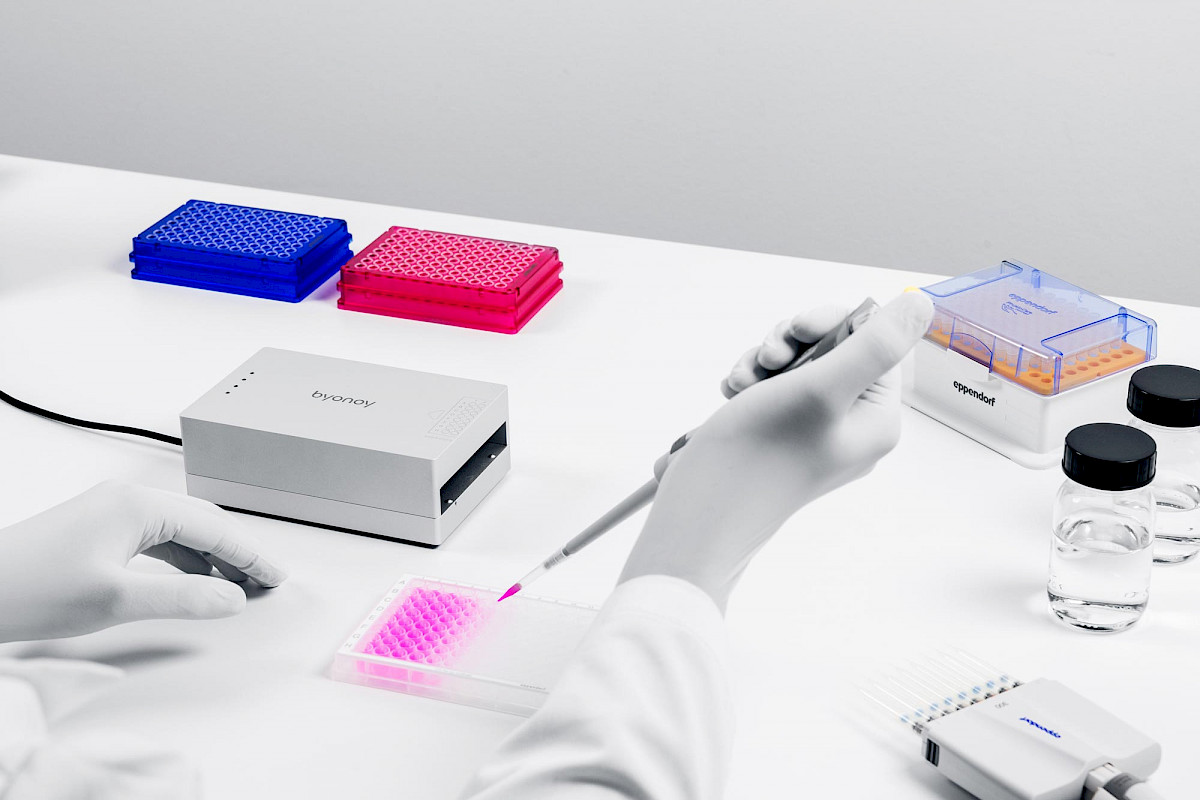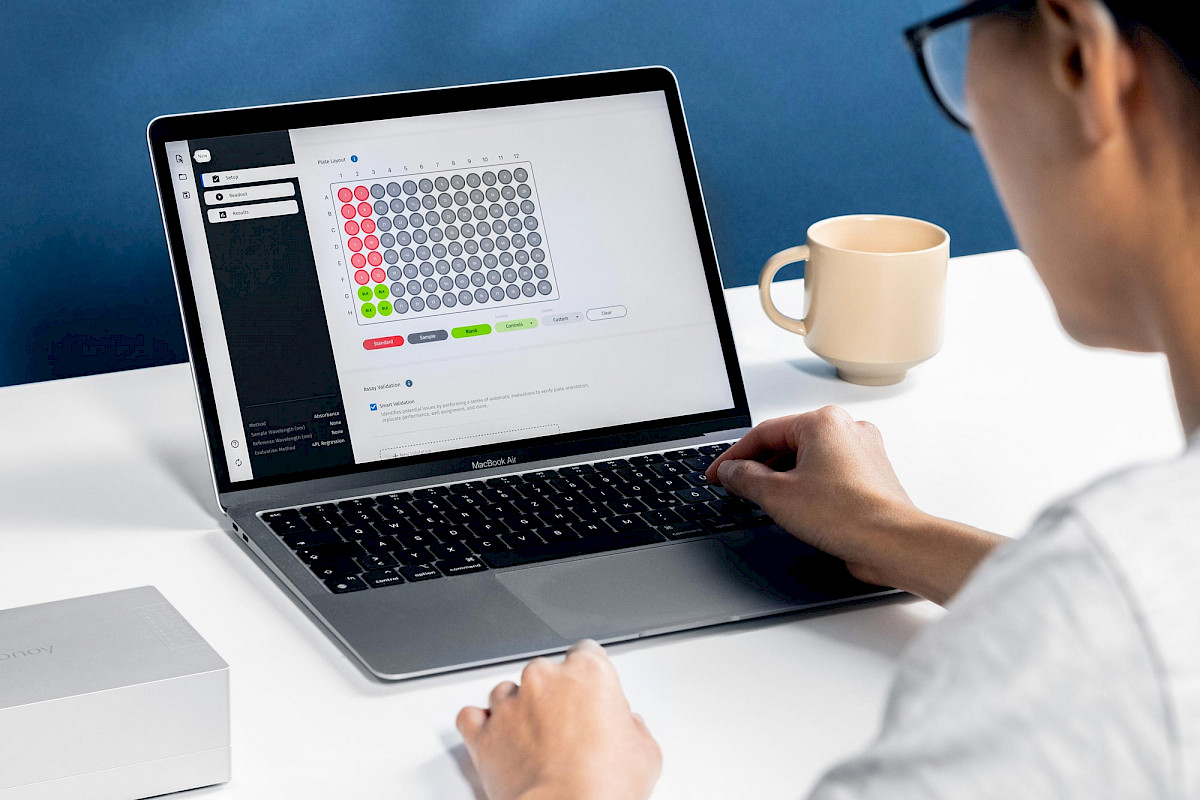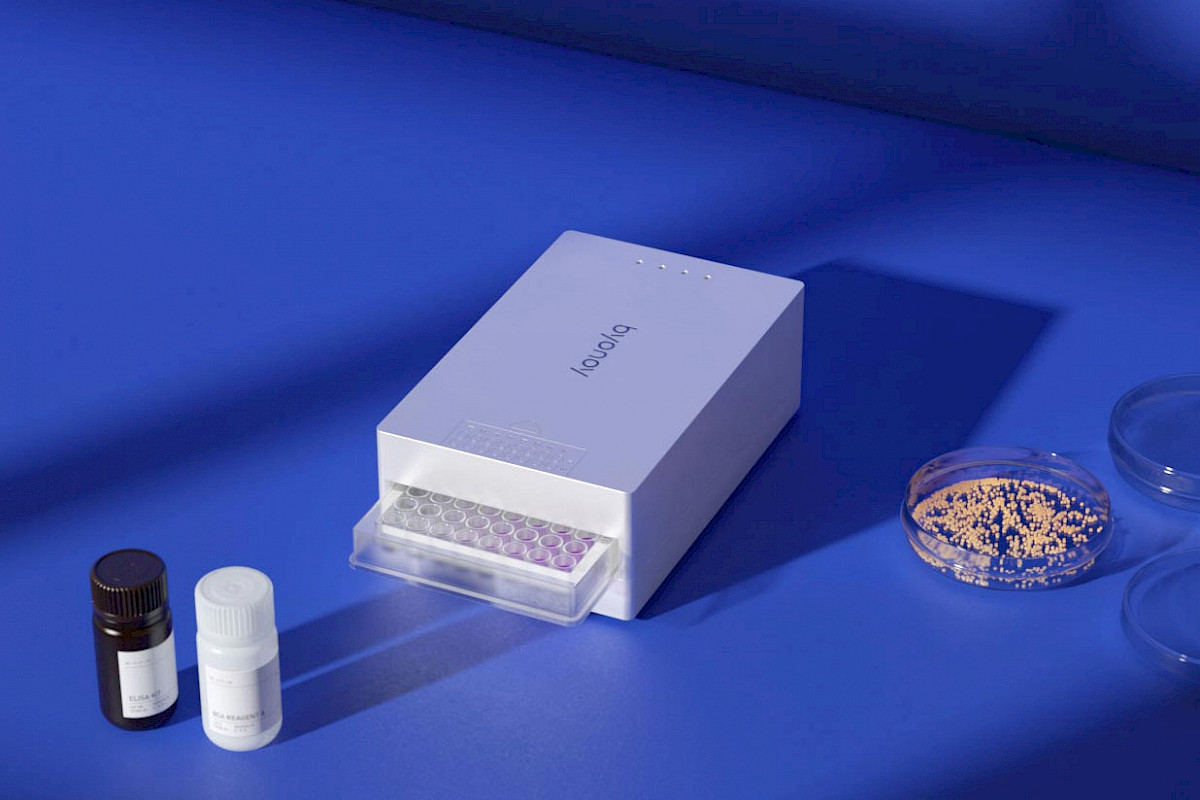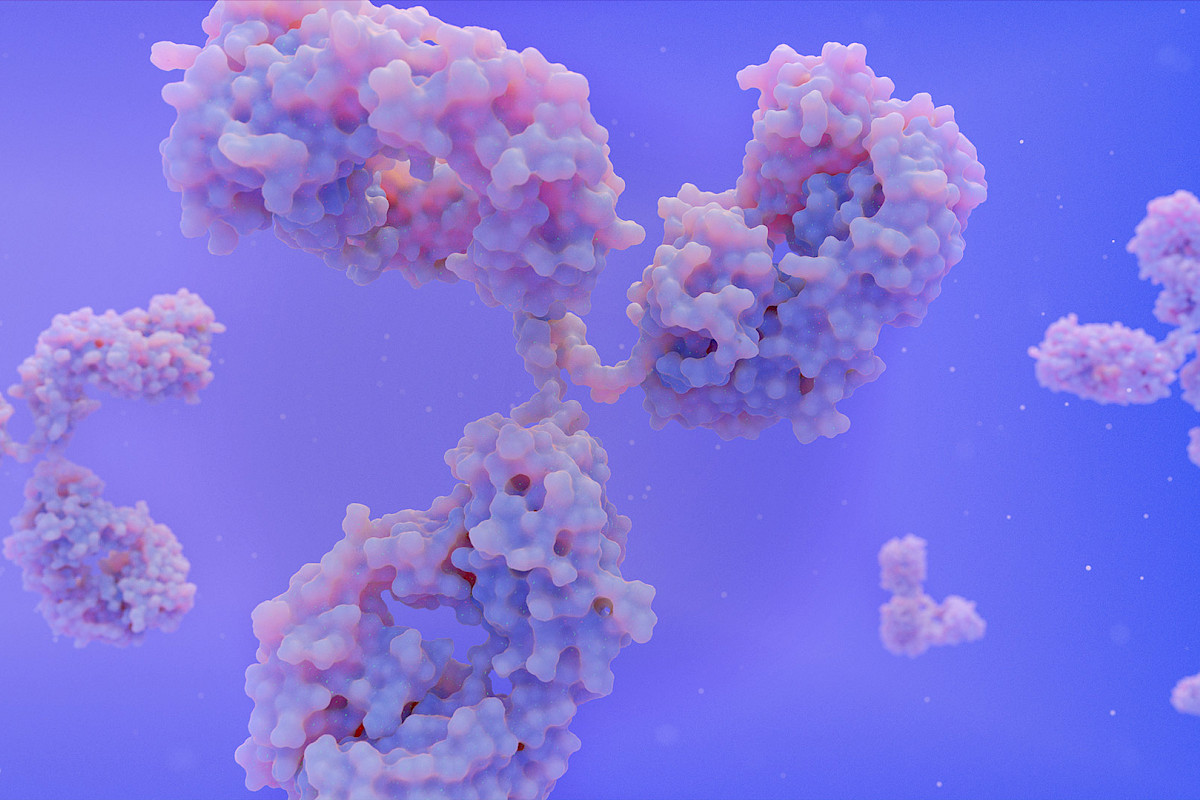Assay & Application Notes
Comparative Study Highlighting the Application of Absorbance 96 for OD600 Measurements
In collaboration with Munich University of Applied Sciences
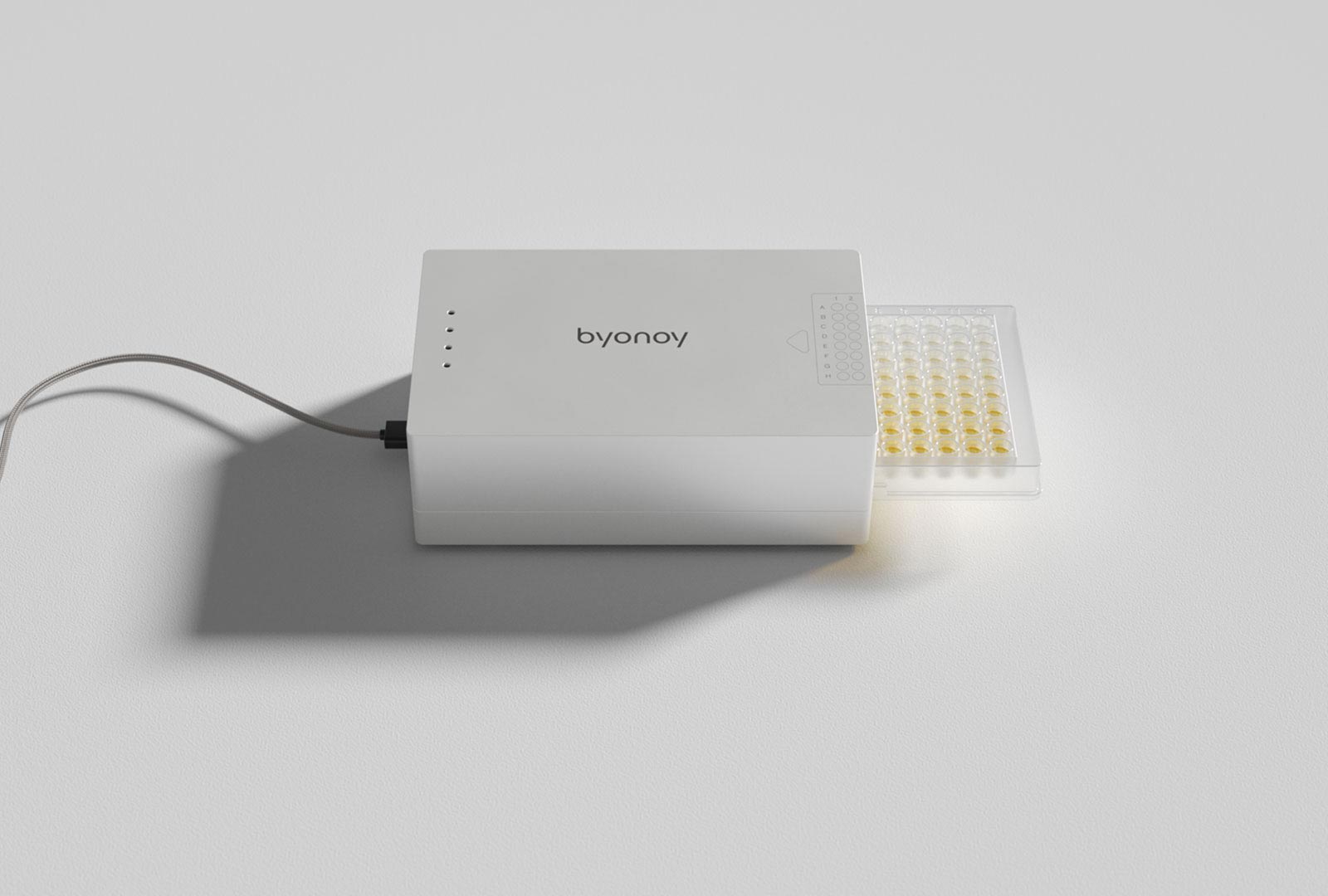
Key highlights
- The OD values obtained by Absorbance 96 were nearly identical to those obtained using another commercially available plate reader.
- The results obtained affirm the Absorbance 96's robustness and reliability in conducting measurements of bacterial growth.
- The compact design of Absorbance 96 offers benefits, such as the ability to perform on-site OD measurements, which enhances lab efficiency and productivity.
Introduction
Bacterial growth measurements are crucial in many research fields, including fermentation, antibiotic efficacy, synthetic biology, and the food industry. Estimating bacterial growth provides insight into the dynamics of the bacterial population, its growth rate and activity, and the effects of environmental conditions on these processes. Understanding the growth rate makes it possible to determine the optimal conditions for bacterial proliferation and maximize the yield of desired products, such as metabolites and recombinant proteins, in biotechnological applications. Additionally, examining the factors underlying factors influencing bacterial growth facilitates the development of targeted strategies for controlling and inhibiting bacterial proliferation, particularly in the case of pathogenic bacteria.
There are various methods to quantify bacterial growth. Optical density (OD) measurement is the most common and easiest method to measure bacterial growth. OD measurement is based on light scattering when a beam of light (usually at 600 nm) is passed through the bacterial sample. As more bacteria in the sample will scatter more light. Thus, the method estimates the number of bacteria in a sample. With an increase in bacteria number, the OD600 value will also increase (1,2).
This application note shows how the Absorbance 96 plate reader helps determine OD600 measurements. In collaboration with HM Munich University of Applied Sciences, a comparative analysis of Absorbance 96 with a different spectrophotometer and a different microplate reader was performed to monitor the bacterial growth of a ureolytic bacterium Sporosarcina pasteurii, well-known for its unique capability of microbially induced calcite precipitation (MICP) required in constructional engineering and material applications (3). The OD readouts obtained by the Absorbance 96 are comparable with those obtained by other commercially available plate readers, confirming the reliability and efficiency of the Absorbance 96 for OD measurements. However, the small footprint of the Absorbance 96 has a significant advantage over other traditional, large-size plate readers, as it offers flexibility and improves the workflow in any laboratory, especially in outside field applications.
Results
Absorbance 96 and SpectraMax iD3 plate readers showed identical OD values
Bacterial growth can be quantified by accessing the optical densities of the samples. Therefore, absorbance measurements using the Absorbance 96 and the SpectraMax iD3 microplate readers were conducted to examine bacterial growth and compare their measurement accuracies. Triplicate OD measurements of the dilution series of Sporosarcina pasteurii in a 96-well microplate were performed at 605 nm, first with the SpectraMax iD3. Subsequently, the same microplate was measured with the Absorbance 96. The obtained OD605 values from both devices were practically identical and showed no significant difference in measurements (T-test: p-value > 0.005, (0.744)).
These results lead to two significant conclusions. Firstly, plate readers employing a similar optical setup will likely produce similar readout values. Secondly, despite the compact size of the Absorbance 96, it yields results comparable to results obtained by SpectraMax iD3. This confirms that Absorbance 96 maintains a high level of readout performance similar to other established microplate readers in the market.
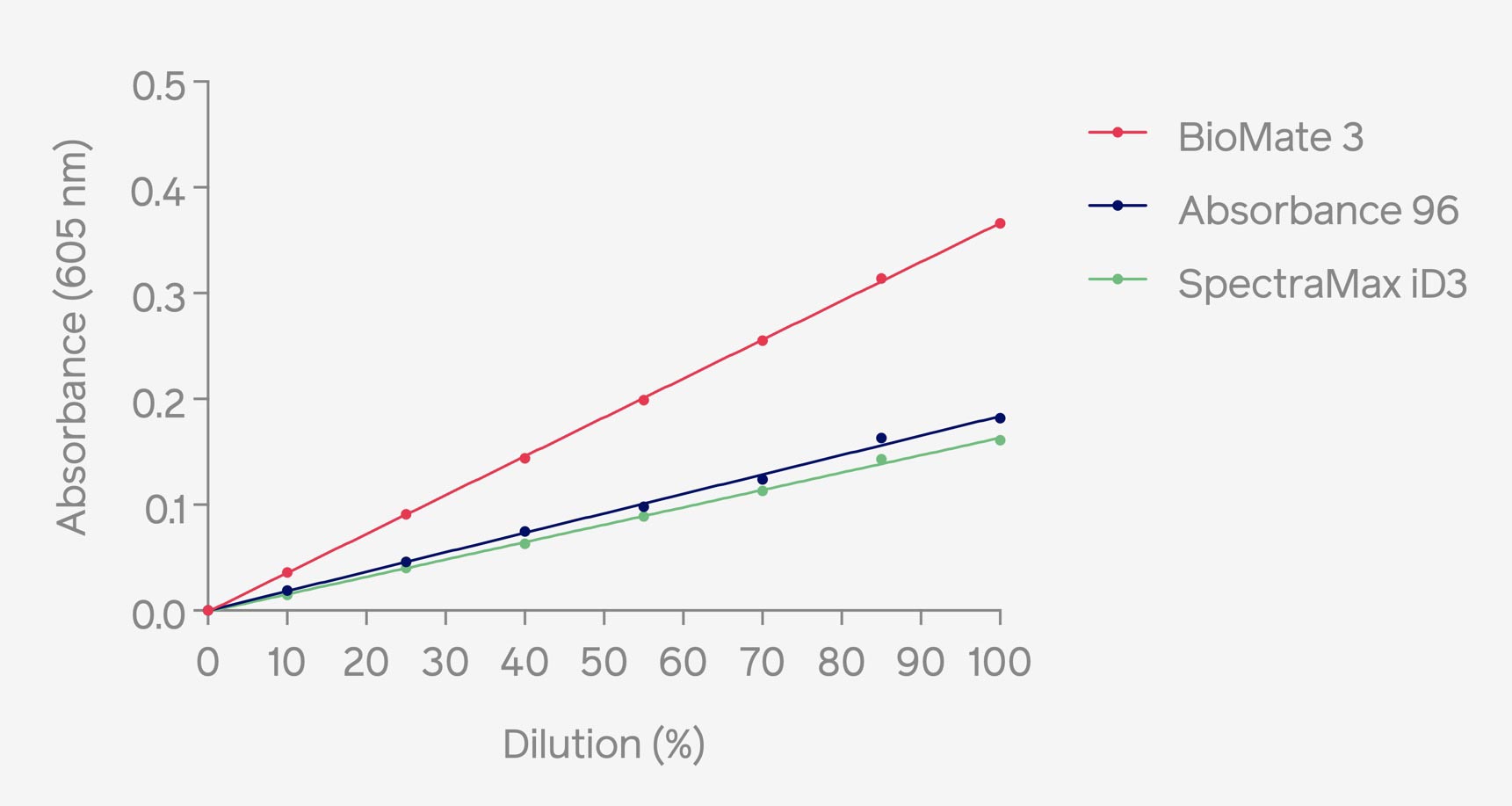
Figure 1: Determination of OD605 measurements for different concentrations of Sporosarcina pasteurii performed on three different absorbance measurement devices. The graph shows the comparative analysis between a spectrophotometer (BioMate 3) and two different plate readers (Absorbance 96 and SpectraMax iD3)
Photometer measurements recorded higher OD values
Measuring the optical density of the bacterial samples at 605 nm with BioMate 3 photometer showed slightly higher OD605 values compared to those values obtained by the plate readers (SpectraMax iD3 and Absorbance 96) (Fig. 1). This difference in the absolute value of OD605 measured by the photometer could be explained by how the light beam is delivered into the samples. The light beam passes horizontally through the cuvettes in photometers, and the path length is usually standardized to 1 cm. However, in plate readers, the light beam passes vertically through the wells, and this orientation creates variables that need to be accounted for. In this case, the volume in the wells determines the path length (4).
Summary
In this application note, we studied OD measurements obtained with the Absorbance 96 plate reader compared with two commercially available instruments: the BioMate 3 photometer and SpectraMax iD3 plate reader. BioMate 3 showed relatively higher OD605 values compared to both plate readers, which can be explained by the difference in the path length. However, the OD605 results obtained by Absorbance 96 and SpectraMax iD3 (plate readers) were practically identical, suggesting that Absorbance 96 can effectively measure bacterial growth compared to any other plate reader. Nevertheless, considering the workflow for OD600 measurements, Absorbance 96 offers extra advantages over other commercially available devices in the market. For example, the compact size of Absorbance 96 facilitates easy mobility, allowing for on-site OD600 measurement directly at the workstation (e.g. fermenter) without the need for sample transportation to other locations housing plate readers.
Materials and experimental outline
To evaluate the effectiveness of Absorbance 96 for measuring bacterial growth, OD measurements for Sporosarcina pasteurii were conducted in different spectrophotometry devices and the readouts obtained were compared.
First, bacterial culture of Sporosarcina pasteurii (obtained from German Collection of Microorganisms and Cell Cultures; DSMZ) was prepared by cultivating it overnight in 20 mL of Caso medium (Merck 105458) supplemented with 4 mL of urea (20g/L) at 30°C and 200 rpm. On the following day, the bacterial culture was diluted (1:10), and a series of dilutions (0%, 10%, 25%, 40%, 55%, 70%, 85%, 100%) of 10 mL were prepared in a Caso medium. For comparison, first OD was measured with the BioMate 3 photometer (Thermo Fisher Scientific) at 605 nm (OD605) in triplicates by incubating 1 mL of the bacterial culture sample in semi-micro cuvettes (LabSolute). Here, the blank was determined by setting it to 0 %. Next, a 96-well microplate was incubated with the different dilution series samples (above-mentioned) and the OD was measured by SpectraMax iD3 (Molecular Devices) microplate reader without a lid at 605 nm in triplicates. Then, the same 96-well microplate was used (without shaking) to measure OD with Absorbance 96.
Learn more about Absorbance 96
Experience the difference for yourself and revolutionize your OD600 assays with Absorbance 9. Meet Absorbance 96.
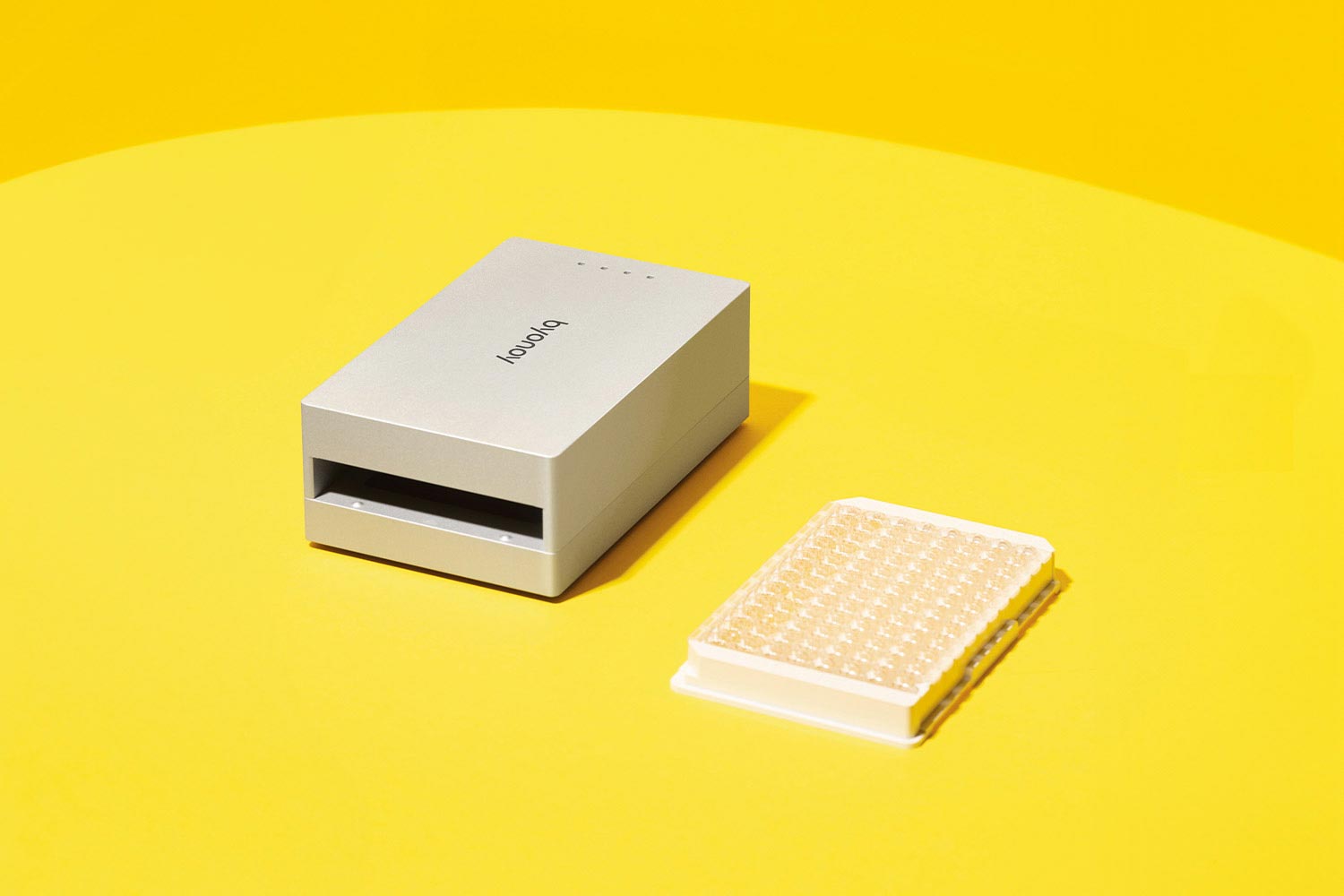
References
1. Mandelstam J, McQuillen K, Dawes, IW. Biochemistry of Bacterial Growth.1982, 449.
2. Stevenson K, McVey AF, Clark IBN, Swain P. S, Pilizota, T. General Calibration of Microbial Growth in Microplate Readers. Sci. Reports 2016 61 2016, 6 (1), 1–7.
3. Ma L, Pang AP, Luo Y, Lu X, Lin F. Beneficial factors for biomineralization by ureolytic bacterium Sporosarcina pasteurii. Microb Cell Fact. 2020 Jan 23;19(1).
4. Beer. Bestimmung der absorption des rothen lichts in farbigen flüssigkeiten. Ann. Phys. 1852, 162 (5), 78–88.
